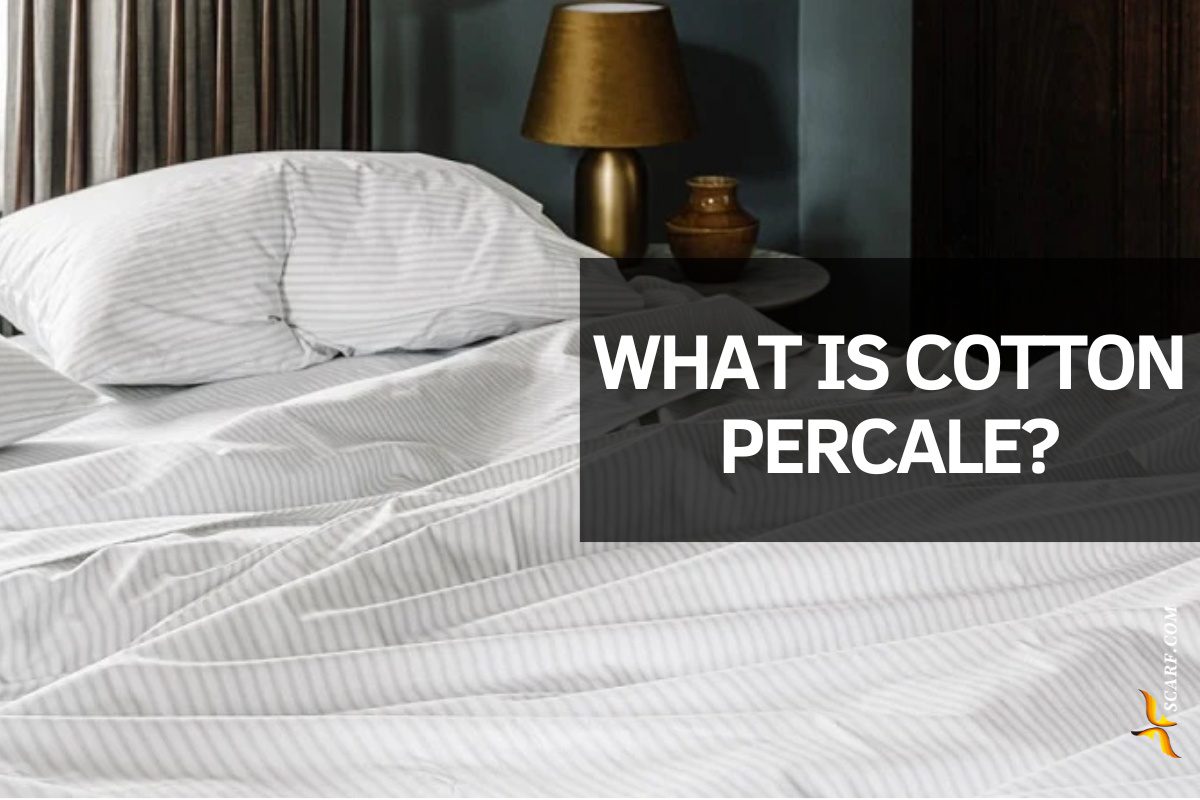Cotton percale is a tightly woven fabric known for its crisp texture, cool feel, and exceptional durability, making it ideal for premium bedding.
Each wash softens the fibers while maintaining their integrity.
Understanding cotton percale helps you appreciate why this fabric remains a timeless choice for quality bedding.
Short answer- What is Cotton Percale?
Cotton percale is a tightly woven fabric known for its crisp texture, cool feel, and exceptional durability, making it ideal for premium bedding.
What is Cotton Percale?
Percale refers to a specific weaving technique. The process follows a simple one-over-one-under pattern. This traditional method produces remarkably balanced fabric. The resulting textile feels substantial yet lightweight. Its equal thread distribution creates exceptional strength. Percale’s straightforward weaving approach has been perfected over centuries.
How is it made?
Manufacturers typically use long-staple cotton fibers for premium percale. These extended fibers create smoother, stronger threads. The weaving process maintains precise tension across both directions. Fabric density generally ranges between 90-160 threads per 10 centimeters. Some artisans apply temporary starch-based coatings before weaving. This technique protects threads during the manufacturing process. The final fabric undergoes careful finishing treatments to enhance its natural qualities.
Why Choose Cotton Percale? The Big Benefits
It’s Crisp, Cool, and Breathable
Percale’s weave pattern creates natural air channels between threads. These microscopic spaces allow continuous airflow. Your body heat dissipates efficiently throughout the night. The fabric feels refreshingly cool against your skin. Many people describe the sensation as sleeping in a clean, breezy environment. This breathing quality makes percale ideal for warm climates.
It’s Incredibly Durable and Long-Lasting
The straightforward weaving technique creates exceptional resilience. These sheets withstand hundreds of washing cycles without thinning. Properly maintained percale bedding often serves families for ten years or more. The fabric’s resistance to pilling maintains its smooth texture. Your investment continues delivering comfort year after year.
It’s Hypoallergenic and Great for Sensitive Skin
Natural cotton fibers rarely irritate human skin. The tight weave creates an effective barrier against dust particles. This characteristic brings special comfort to allergy sufferers. Many parents select percale for children’s bedding. The fabric provides protection while allowing the skin to breathe naturally.
It’s Soft and Gets Softer Over Time
New percale offers a distinctive crispness that many find invigorating. The breaking-in process transforms the fabric gradually. Washes naturally soften the cotton fibers without weakening them. Your sheets develop a personalized comfort unique to your care routine. This evolving softness makes the fabric feel uniquely yours.
It’s Easy to Care For
Percale forgives occasional laundry mistakes. The fabric responds well to standard washing machine cycles. Its wrinkle-resistant qualities simplify daily maintenance. You won’t struggle with static cling during dryer months. The fabric’s durability handles various cleaning products without damage.
We specialize in customizing scarves, hats, clothing and accessories. Please feel free to contact us.
Cotton Percale vs. Other Cotton Fabrics
Percale vs. Sateen
Sateen’s weaving technique creates longer floating threads on the surface. This produces characteristic sheen and silkier hand feel. Percale provides more structure and crispness. The matte finish of percale offers understated elegance. Sateen tends to feel warmer against the skin. Your personal preference determines which serves you better.
Percale vs. Silk
Silk originates from silkworm cocoons rather than plant fibers. The protein structure creates unique temperature regulation. Percale delivers consistent performance at more accessible price points. Cotton withstands regular washing better than delicate silk. Many people prefer percale’s substantial feel over silk’s slippery texture.
How to Choose the Best Cotton Percale
Look for Thread Count and Material
Quality percale typically features thread counts between 180-300. Higher numbers don’t necessarily improve the experience. The cotton’s origin affects fiber length and strength. Egyptian and Pima cottons often deliver superior results. Fabric blends incorporating synthetic fibers may enhance durability. Your personal priorities should guide selection.
Feel the Fabric and Check the Weave
Quality percale feels smooth yet substantial in your hands. The fabric should resist stretching when pulled gently. Hold potential purchases up to light sources. Superior percale reveals minimal light penetration. Examine the stitching along the edges for consistency. These details indicate manufacturing care.
How to Take Care of Your Cotton Percale
Initial washing should use moderate temperatures around 45°C. Avoid chlorine bleach which weakens cotton fibers. Subsequent cleanings can use slightly warmer water when needed. Gentle detergent formulations preserve fabric integrity. Tumble drying works well at medium heat settings. Line drying delivers fresh crispness without energy consumption. Iron while slightly damp for smoothest results. Medium temperature settings prevent scorching.
Frequently Asked Questions About Cotton Percale
Is cotton percale good for hot sleepers?
The breathable weave structure promotes air circulation. Many people sleep cooler on percale than other fabrics.
Does cotton percale feel soft?
The fabric offers crisp softness that evolves with washing. The experience differs from fluffy softness.
Is percale or sateen better?
Percale provides cool crispness while sateen offers warm silkiness. Your sleeping preferences determine the better option.
Why is cotton percale so expensive?
Superior materials and precise manufacturing increase costs. The long service life provides excellent value.
Can you use cotton percale all year?
The temperature-regulating properties work in all seasons. The fabric adapts to your body’s needs.
Does cotton percale wrinkle a lot?
The tight weave minimizes wrinkling compared to other cottons. Some natural creasing reflects normal use.
What is the best thread count for percale?
180-300 threads per square inch represents the quality range. Extremely high counts may compromise breathability.
Is percale fabric good for clothing?
The durable yet breathable qualities work well for shirts and dresses. Many premium clothing items use percale weaves.
How is percale different from regular cotton?
Percale specifies a particular weave pattern rather than fiber type. The technique creates unique characteristics.
Are there different types of percale?
Sheeting and shirting percale serve different purposes. Density and finish vary between applications.
We specialize in customizing scarves, hats, clothing and accessories. Please feel free to contact us.



